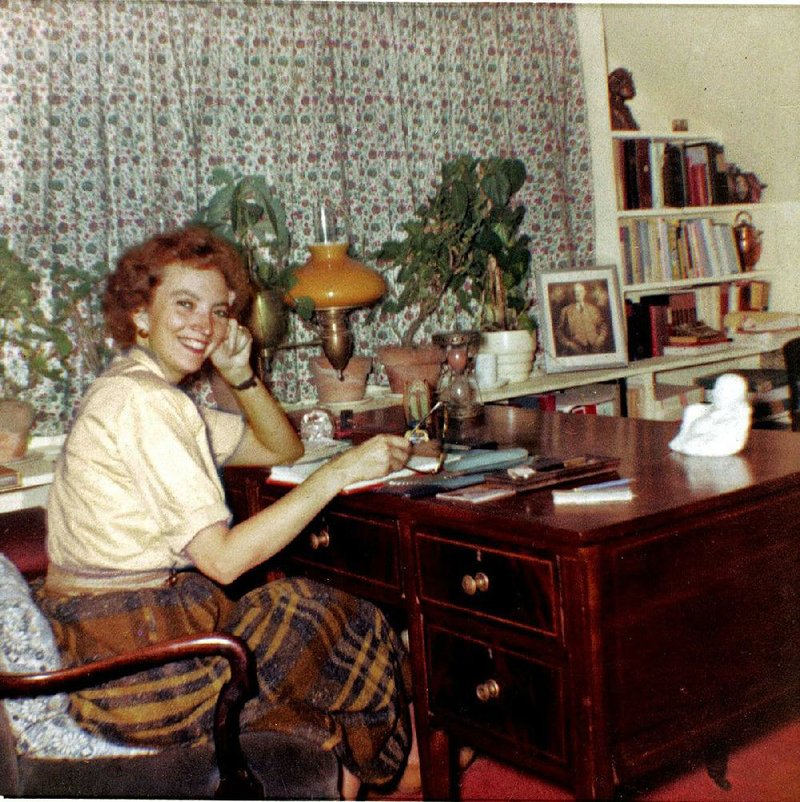Today, Madeleine L'Engle stands as a literary icon, an entrancer of millions of readers whose genre-busting classic A Wrinkle in Time is now a Disney-fueled $103-million movie.
But in December 1960, she was a frustrated unknown holding yet another letter from a publisher saying "No thanks" to the book that would become a blockbuster.
"This is pleasantly done -- but for me there isn't quite enough story value," said the two-sentence blowoff from Mercury editor Robert Mills dated Dec. 10. It was one of a string of stinging rejections that L'Engle lamented throughout her career but that have not been shared publicly before.
L'Engle would speak for decades about the crisis of confidence she suffered as publisher after publisher swiped left on a manuscript she believed in to her core.
"The trouble finding a home for it remained deeply a part of her," said L'Engle's granddaughter Charlotte Jones Voiklis, who with her sister Lena Roy has just written Becoming Madeleine, a biography of their grandmother that ends when Wrinkle was finally released to international acclaim.
Wrinkle's tortured birth is the stuff of publishing legend, an example of a blindness to brilliance that also afflicted editors who passed on C.S. Lewis' The Chronicles of Narnia, Rudyard Kipling's The Jungle Book and The Tale of Peter Rabbit, which Beatrix Potter eventually had to self-publish. At least five companies didn't see the merits of Anne of Green Gables. A dozen let Harry Potter and the Sorcerer's Stone slip away.
L'Engle frequently put the number of rejection letters she endured at 26, most of which she tossed, according to Voiklis, who manages her grandmother's papers.
But she kept a few, and those offer a peek at the confusion that L'Engle's inventive science fantasy, with its girl heroine and spiritual undertones, caused to pigeonholing publishers throughout New York. What they couldn't categorize, they vetoed.
"Dear Theron," began an Aug. 25 letter to L'Engle's agent Theron Raines from Random House editor Lee Wright. "You are so right to be bewildered by [L'Engle's manuscript]. It is strange and as you say, it's 'something between an adult and a juvenile novel.'"
Mills, of Mercury, objected not only to the absence of story but to the "presence of the devil, who has been showing up altogether too regularly in my mail." David C. Knight of Franklin Watts was the most brutal: "Before submitting it elsewhere, I would advise the author to do a cutting job on it by half."
In her journal, portions of which Voiklis and Roy reproduce in their biography, L'Engle described the pain of such offhand criticism. "Each rejection, no matter how philosophically expected, is a wound," she wrote. "I won't destroy my book for money for some editor who completely misses the point, which this one obviously did."
Most of the rejections were addressed to Raines, who annotated them with notes of apology, encouragement and frustration before passing them to the increasingly discouraged author.
Circling Lee's characterization of him as being "bewildered" by the manuscript, Raines wrote: "I don't know where she got this. I didn't say or imply bewilderment."
"Here is the damned note," he wrote below Knight's signature. "Would you cut it in half for us? [the letter, I mean]."
L'Engle, who died in 2007 at age 88, was buffeted by uncertainty as a writer and a person. She and her husband, actor Hugh Franklin, had just moved back to Manhattan after an aborted experiment in downsizing by running a general store in rural Connecticut. His career was stuttering and nothing seemed assured, least of all her future as a writer.
But she persisted through rejection after rejection, continuing to tinker with the work but resisting calls for radical revisions. She had faith in the story that she called her ultimate "psalm of praise to life, my stand for life against death."
Soon after the holidays, a mutual friend put a word in for L'Engle with publisher John Farrar. He agreed to read the manuscript, which she dropped off on Jan. 16, 1961. Two days later, he responded that he was intrigued but also "afraid." He asked for more time.
On a morning when school was out for parent-teacher conferences, her son Bion appeared by her bedside: "Mommy, Theron says I'm to wake you up," he said, according to L'Engle's journal. "He wants to speak to you. It must be very important."
Farrar, Straus & Giroux wanted her book.
"Happiness is as numbing as unhappiness," L'Engle marveled.
A Wrinkle in Time arrived at bookstores Jan. 1, 1962. In 1963, it won the Newbury Medal.
Continuously in print 56 years on, it has reportedly sold more than 10 million copies. The Disney big-budget release, directed by Ava DuVernay, is the second film version.
Style on 03/18/2018
